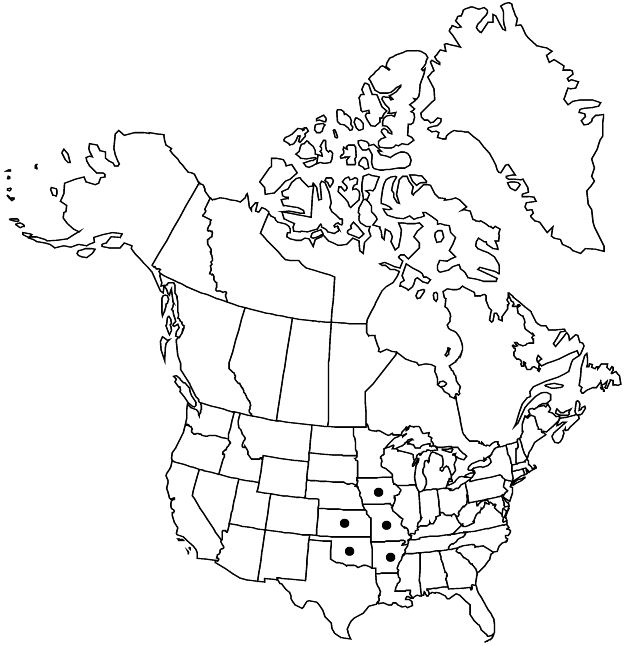Callirhoë bushii
Rhodora 11: 51. 1909.
Plants perennial. Stems 1–9, weakly erect, ascending, or decumbent, 4.8–14 dm, hairy, hairs 4-rayed, stellate, and often simple, spreading or retrorse, sometimes glabrate. Leaves: stipules persistent, ovate, somewhat auriculate, 8–16 (–21) × 3.5–10 (–13) mm; petiole 2–27 (–37) cm; blade suborbiculate to ovate, (3–) 5–7-lobed, 4–14 (–19) × (2.3–) 5–15 cm, surfaces hairy, hairs stellate and simple, lobes broad, oblong or obovate. Inflorescences racemose; involucellar bractlets 3, lanceolate or ovate, 8–22 × 1–4 mm. Flowers bisexual; calyx lobes valvate in bud, forming apiculate or acuminate point; petals red or pale-red without white basal spot, 2–3.2 cm. Schizocarps 8.5–11.5 mm diam.; mericarps 15–20, 4–4.6 × 2–3.5 mm, sparsely hairy, indehiscent; beaks not prominent, 0.7–2 mm; collars well developed, 2-lobed. 2n = 56.
Phenology: Flowering late spring–summer(–early fall).
Habitat: Rocky woods, limestone glades, glade margins, meadows, disturbed, open areas
Elevation: 200–500 m
Distribution

Ark., Iowa, Kans., Mo., Okla.
Discussion
Callirhoë bushii is found in the Ozark Plateaus, Ouachita Mountains, and Cherokee Plains. Adventive populations have also been found north of the Missouri River in Iowa and Missouri.
Callirhoë bushii is in the Center for Plant Conservation’s National Collection of Endangered Plants.
Selected References
None.
Lower Taxa
"broad" is not a number."dm" is not declared as a valid unit of measurement for this property.